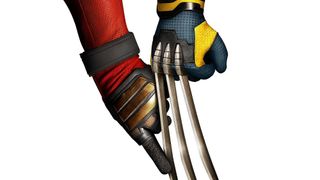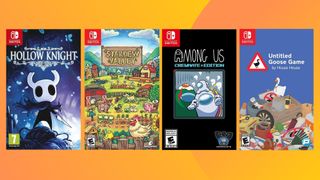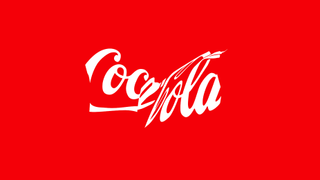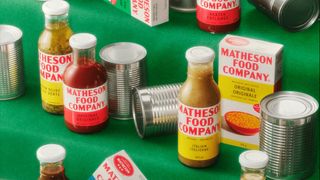'Magical realism' is the phrase that New York-based Tomer Hanuka uses to describe his own work. And in keeping with his artwork, it's in a dreamlike, almost poetic style that this Israeli-born illustrator now reminisces about how he found his passion for drawing through comic books: "My earliest memory plants me on a Persian carpet, drawing, with my brother," he recalls.
"We're surrounded by American comic books, this is the late 70s, the windows are open, and a warm wind blows in. It's summer - it's always summer in the Middle East - yellow, dusty. The comics are just so mysterious and majestic; an unreachable light in a faraway land. It's more beautiful and exciting than anything else around. Years later I pack a suitcase and move to New York, looking for that hypnotic land of full-colour magic. Eventually I had to concede that I'll never find it, the light remains out of reach. And that was the point - getting lost."
Hanuka may feel lost in a certain sense, but his fantastic ability to apply his comic-inspired style has enabled his work to reach all kinds of audiences. He has created book jacket images for Penguin, Random House, Scholastic, Tor and others, and a raft of periodicals including Playboy, Rolling Stone, Business Week, Time, The New York Times and Der Spiegel have all been graced with his imagery. Not surprisingly, he's created all kinds of comics and graphic novels, including the five-issue series Bi-Polar, and a compilation of his work called Placebo Man. In 2009, Israeli film Waltz with Bashir was nominated for an Oscar in Best Foreign Picture, with Hanuka as part of the art team.
His distinctive technique first developed shortly after graduating from the School of Visual Arts in New York. A group of SVA graduates, including Hanuka, decided to self-publish a comic anthology entitled Meathaus, and he created the cover. "It was different from the work I did in college, and had a crisp outline and flat digital colouring," he explains. "Up until then, my school folio was all painted acrylic images. This Meathaus cover was different - it was based on the visual vocabulary of comics, but applied to an illustration context."
He went on to create an entire portfolio of work in this differing style, shopped it around, and by the end of his first summer out of college was already working for The New Yorker. He found an agent, and not long after won a gold medal from the Society of Illustrators for the cover of the third issue of Meathaus.
At this point it's tempting to chirp that the rest was history, but far from it. The freshness of Hanuka's style was catching the eye of art directors, but part of his popularity and reputation are also down to a granitelike imperviousness to good old hard work. As he says himself, a deadline is the best cure for creative block, and for a period early in his career he was saying yes to a lot of work.
"For a while, there I was doing two to four projects per week, which led to numerous discoveries, accidents - good and bad, frustration, and fulfilment. When you work a lot, you get better much faster," he adds. "I think production is crucial to any artist. The act of cranking stuff out is our gym-time, in a way. Suddenly the craft - drawing and conceptualising - becomes second nature. Your gun is always loaded, and everything looks like a target. The main downside is that there is no time left to explore personal projects."
Today he works just as hard, but devotes more of his time to personal or more long-term projects. His twin brother Asaf is a comic artist; together they're working on a graphic novel written by Boaz Lavie, and also run the blog Tropical Toxic. Commercial work needs an interesting or exciting angle for him to agree to take it on.
One of his recent head-turners was an illustration for Rolling Stone for the magazine's review of Congratulations, the album by MGMT. The brief was to draw the band as hipster astronauts floating in a psychedelic version of space. "I started by collecting reference images of the band and their style, as well as some references of astronauts, and looked into psychedelic colour palettes - mostly by way of Yellow Submarine," he explains.
Next, he sent in a pencil sketch. "Usually I'll try a few mini compositions at thumbnail size - by a few I mean anything from five to 50. But this time I had a clear vision of the way the bodies would float in space, and just went with it. Once the sketch was approved, I printed it in blue lines onto thick Bristol paper, blowing it up by 200 per cent. I inked the blue line with speedball ink and a triple zero brush, and then scanned in the inked drawing as a 1200dpi bitmap, so I could get rid of the blue under-drawing of the sketch," he says.
Going into Photoshop, he changed the file to CMYK and brought the layer with the lines on it to the top, setting it to Multiply. Using Photoshop he created coloured shapes for each field in the image, using the Lasso tool underneath the layer of black lines. He continues: "Each colour is on its own layer so I can change them later. I usually have between 50 and 200 layers per file, and I change the colours quite a bit. That's always the longest part of the process for me - deciding on the colours."
After finalising the palette, Hanuka added small highlights digitally with a soft-edged brush, such as the flares you can see on the space helmets. Other small graphical elements were also added using the Vector Shape tool. "The response was positive," adds Hanuka, "and I was very pleased with how it came out in print."
Another job he enjoyed was the creation of two wine bottle labels for the Australian producer Some Young Punks. New World wines seem to have a growing reputation for sassy inventiveness in their packaging policies, and Hanuka received a clear, short brief, with lots of freedom to explore. They'd chosen an animal for each type of wine they produce, and asked him to draw a label featuring a woman and a bull for a wine called Lust Collides, and another with a woman and a tiger to go with Fierce Allure.
"My initial ideas had to do with the women sitting on the animals, riding them, but I wanted to push this into something iconic - to find a way to reduce the narrative down to a symbol, boil it down graphically, pare it down to the very essence," he explains. "Since it was going to be a label, it needed to be powerful, readable and instantly communicative."
After a rough of each label had been approved, he began more detailed drawings of the animals. He continues: "I wanted a softer, furry feel for their heads, a texture that would be both a contrast to the smooth female bodies, and an interesting negative space of its own. I scanned the pencil renderings separately from the inked line art. By having a flat colour - set to Multiply in Photoshop - above the pencil layers, I could change the colour of the pencil without hurting the nuances of the drawing. The type was drawn using my Wacom tablet directly in Photoshop; it's sort of based on other typography, but I wanted a more hand-drawn, direct and wild energy there."
The colour scheme he chose came directly from his own feelings about wine: he wanted to suggest class and elegance. Taking the view that really good wine can make one feel more positive about the future, Hanuka was looking for a group of colours that exuded optimism and maturity.
"I had to change the faces of the women, as my initial versions were too wild - I needed to tame that down a little bit," he confesses. "I was pleased with the result, and also had a box of bottles delivered to my place. This is the best job."
In fact, he liked the images so much that he decided to sell both labels as prints through his website. Another popular commissioned work - also a print - is called Old Moab. This illustration ran in Playboy, accompanying a short story by Ron Carlson. "My aim is to construct a believable moment, where the metaphor and the actuality of the action taking place seamlessly merge into a singular dramatic visual," Hanuka says, when asked about his approach to illustration. And this particularly striking piece of his work perfectly encapsulates that ethos.
The main character is looking away, lighting a cigarette. Another one looks down, a dog wanders into the scene with its dusty old cars and a neon-lit diner, and slightly ominous clouds swirl above. It seems moody, indirect and multi-layered, with a strong sense of narrative even without the accompanying text.
"The brief was not to expose the surprising ending of the story in the image, since it would ruin the experience of reading. So I needed to find a way to foreshadow the tragic event without spelling it out," says Hanuka. "This is about storytelling. It's creating drama, not unlike a movie director, but frozen in a single moment. The trick for me was to show the bare minimum of information, but make good use of what I do show, such as the cloud and the parking lot, to tell the story: to use these seemingly unimportant space-fillers to drive the story, and create a context for a small drama. It's an echo chamber for the emotions the characters feel throughout the story."
The technique involved drawing and digital colouring, as with his other work, while colour was used to heighten the drama - particularly via the dash of neon pink. "I wanted to create a quiet, middle-of-nowhere atmosphere, intruded on by man-made garish neon. A melancholia that isn't romantic, just desperate," he says.
The print is sold out - testament to the picture's popularity - but as Hanuka quickly points out, his print runs are small and don't last long. However, selling work in this way is something that makes him optimistic about the future for illustrators like himself. As print publishing shrinks, illustrators can now turn to technology and become creative entrepreneurs. "An illustrator might find it hard to get a gig in a magazine, but can design wallpapers, set up an e-shop, and print it on-demand through another vendor," he says. "It's a crazy, huge thing that's starting to change the industry in a truly profound way.
"We're no longer service providers, but are also becoming mini-CEOs; poster-makers; puppet designers; T-shirt warriors. Illustrators have broken into making things, rather than just illustrating them."




